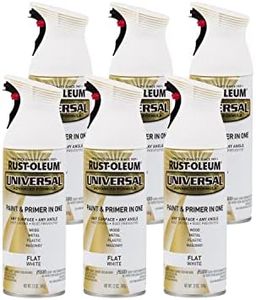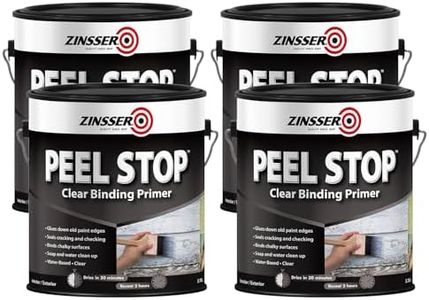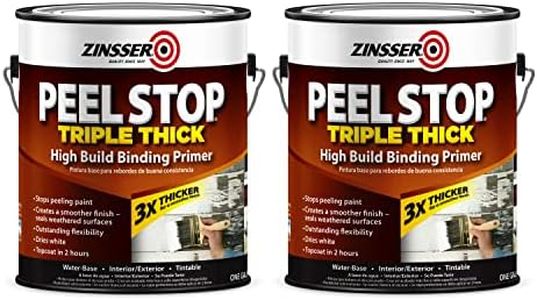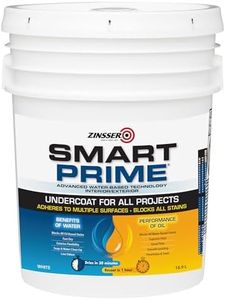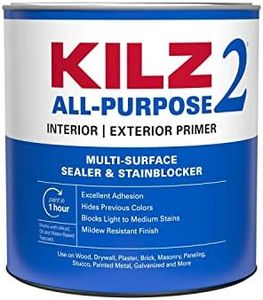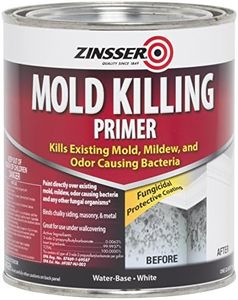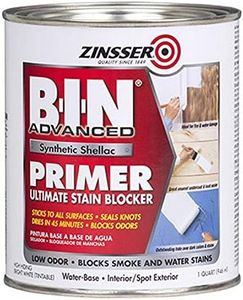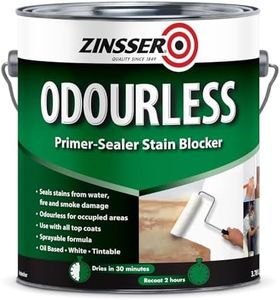We Use CookiesWe use cookies to enhance the security, performance,
functionality and for analytical and promotional activities. By continuing to browse this site you
are agreeing to our privacy policy
10 Best Exterior Primers
From leading brands and best sellers available on the web.By clicking on a link to a third party's website, log data is shared with that third party.
Buying Guide for the Best Exterior Primers
When choosing an exterior primer, it helps to understand that this product acts as the foundation for any paint job on outside surfaces. A good primer prepares surfaces to hold paint better, protects your material from weather and moisture, and can help paint last longer. Picking the right primer means thinking about the material you’re working with, the local climate, and the appearance you want. Knowing some key features will make it easier to narrow down your options and find what fits your project best.Type of PrimerPrimers for exterior use generally come in three types: oil-based, latex (water-based), and shellac. Oil-based primers offer great adhesion and stain-blocking, which makes them good for stained or weathered wood, but they take longer to dry and require mineral spirits for clean-up. Latex primers are easier to clean up with water, dry faster, and are often the best choice for bare wood, brick, or new constructions. Shellac primers block tough stains and odors but are mostly used for specific problem areas due to needing alcohol for clean-up. The right type depends on your surface and what issues—like stains or moisture—you expect.
Surface CompatibilityPrimers are made for different surfaces such as wood, metal, masonry, or previously painted areas. Using a primer matched to your surface ensures it sticks well and gives lasting protection. Some primers are labeled multi-surface and work on various materials, while others specialize for a certain kind, offering better performance. Match the primer to what you’re painting—wood needs flexibility, masonry needs breathability, while metal needs rust protection.
Stain-Blocking AbilityStain-blocking tells you how well the primer can cover up marks, previous paint colors, or damage like rust or water stains. High stain-blocking primers are good if your surface has heavy discoloration or marks that you don’t want to show through the paint. For clean or new surfaces, a basic primer may be enough, but if you’re dealing with tough stains or are changing from a dark to a light color, choose a high stain-blocking formula.
Weather ResistanceSince exterior primers face rain, sun, temperature swings, and more, weather resistance is crucial. Primers with strong weather resistance stop peeling, cracking, and water getting in. There are primers designed to resist mold, mildew, and UV rays too. If you live in a particularly wet or sunny climate, or your paint job faces lots of weather, pick a primer that lists these features to keep your finish looking good longer.
Drying TimeDrying time is simply how long the primer takes to be ready to paint over. This can vary from under an hour for quick-drying formulas to several hours for oil-based or shellac primers. Faster drying helps when you need to finish a job in one day or if the weather is unpredictable, but longer drying can be best for tougher adhesion. Think about your time frame and working conditions before deciding.
AdhesionAdhesion describes how well the primer sticks to the surface—strong adhesion stops paint from peeling or blistering over time. Some primers are labeled as high-adhesion or bonding, meant for slick or shiny surfaces like old paint, metal, or vinyl siding. If your project involves repainting a smooth or previously glossy finish, look for a primer known for its bonding capabilities.
